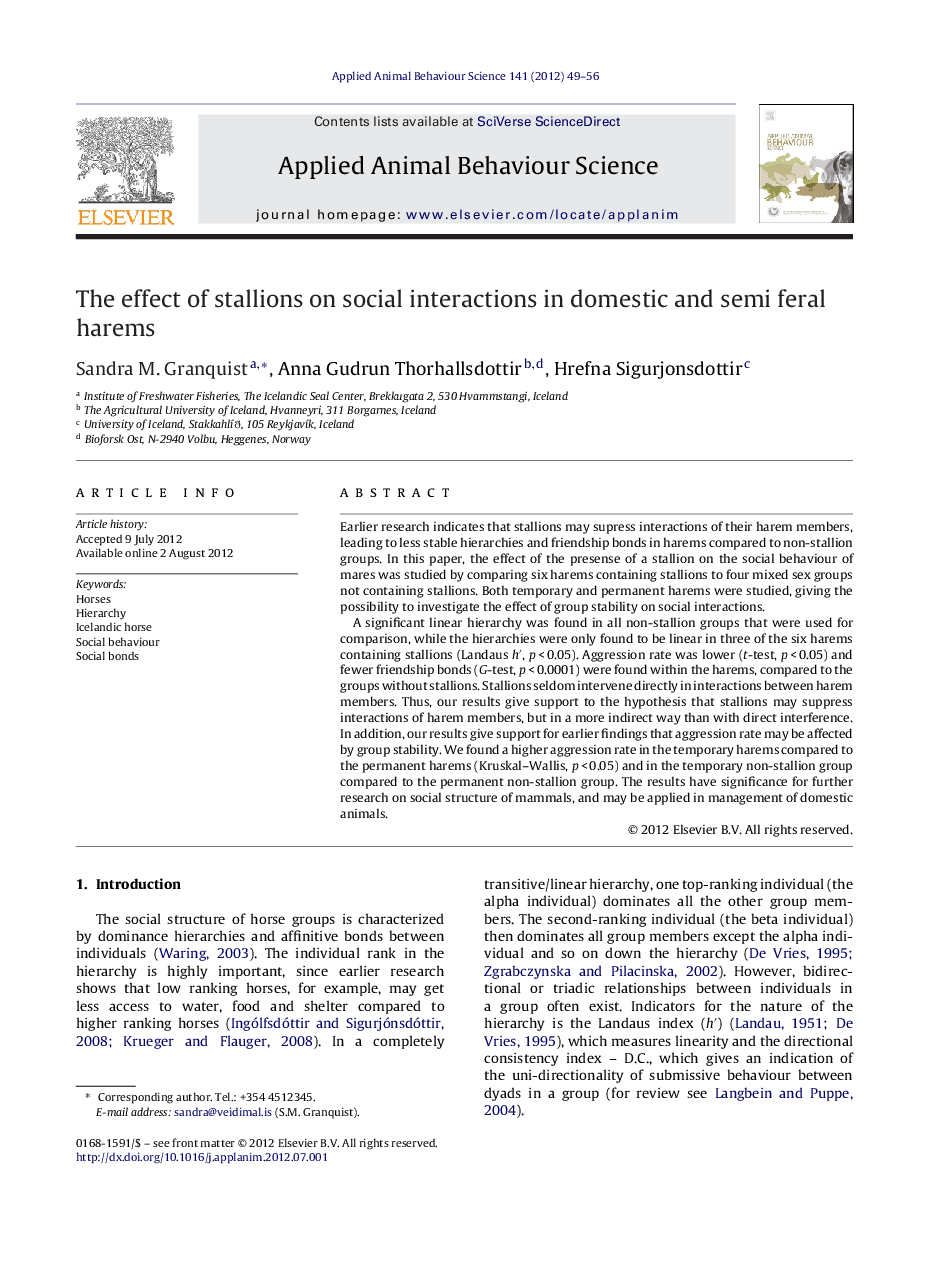| Article ID | Journal | Published Year | Pages | File Type |
|---|---|---|---|---|
| 4522842 | Applied Animal Behaviour Science | 2012 | 8 Pages |
Earlier research indicates that stallions may supress interactions of their harem members, leading to less stable hierarchies and friendship bonds in harems compared to non-stallion groups. In this paper, the effect of the presense of a stallion on the social behaviour of mares was studied by comparing six harems containing stallions to four mixed sex groups not containing stallions. Both temporary and permanent harems were studied, giving the possibility to investigate the effect of group stability on social interactions.A significant linear hierarchy was found in all non-stallion groups that were used for comparison, while the hierarchies were only found to be linear in three of the six harems containing stallions (Landaus h′, p < 0.05). Aggression rate was lower (t-test, p < 0.05) and fewer friendship bonds (G-test, p < 0.0001) were found within the harems, compared to the groups without stallions. Stallions seldom intervene directly in interactions between harem members. Thus, our results give support to the hypothesis that stallions may suppress interactions of harem members, but in a more indirect way than with direct interference. In addition, our results give support for earlier findings that aggression rate may be affected by group stability. We found a higher aggression rate in the temporary harems compared to the permanent harems (Kruskal–Wallis, p < 0.05) and in the temporary non-stallion group compared to the permanent non-stallion group. The results have significance for further research on social structure of mammals, and may be applied in management of domestic animals.
